The top amateur golfers who never turned pro
1/29/2023 | by Jim Young of AmateurGolf.com

This might be golf's first-ever "best of all-time" list that doesn't include Jack Nicklaus, Tiger Woods or Annika Sorenstam
This might be golf's first-ever "best of all-time" list that doesn't include Jack Nicklaus, Tiger Woods or Annika Sorenstam.
Nicklaus, Woods and Sorenstam, winners of a combined 43 majors, simply didn't qualify.
However, you'll find the likes of Dick Chapman, Willie Turnesa and Cyril Tolley on this list, along with Chick Evans, John Ball, Jr., and Harold Hilton, along with Margaret Curtis, Carole Semple Thompson, Catherine Lacoste and Ellen Port.
While many of today's young players are able to parlay their successful amateur careers into lucrative professional careers, there are many who left their marks on the game, both on and off the course, as lifelong amateurs.
Here's our list of the top amateurs who never turned professional. The players are listed alphabetically -- we'll leave the rankings up to others.
• • • • •
The Top Male Amateurs Who Never Turned Pro
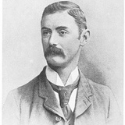
John Ball, Jr.
The game’s first great amateur golfer, Ball was the first Englishman and the first amateur to win The Open in 1890. The son of the manager of the Royal Hotel at Hoylake, he grew up playing on the links of Royal Liverpool and won the British Amateur eight times (1888, 1890, 1892, 1894, 1899, 1907, 1910, 1912) between 1888 and 1912. He also won the Irish Amateur championship on four occasions. He spent three years fighting in the Boer War and at the age of 60 still reached the last 16 of the Amateur. Ball was inducted into the World Golf Hall of Fame in 1977.
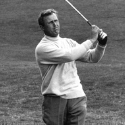
Sir Michael Bonallack
Born in Chigwell, Essex in 1934, Bonallack had a tremendously impactful career on and off the golf course. He won the British Amateur Championship and the English Amateur five times each and the Brabazon Trophy four times. He was a member of nine Walker Cup teams and played in the Eisenhower Trophy seven times. His best finish at the Open Championship was 11th in 1959. He was also the leading amateur at the Open in 1968 and 1971. Bonallack served as the Secretary of The Royal and Ancient Golf Club of St Andrews from 1983 to 1999 and Captain from 1999 to 2000. In 1972, he was awarded the Bob Jones Award, which the highest honor given by the United States Golf Association in recognition of distinguished sportsmanship in golf and in 1998, he was knighted by Queen Elizabeth for his services to golf. Bonallack was inducted into the World Golf Hall of Fame in 2000.
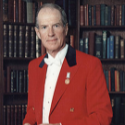
William C. Campbell
A native of Huntington, W. Va., Campbell’s amateur career spanned 37 U.S. Amateurs, including 33 consecutively from 1941–77. He won the event in 1964 at Canterbury Golf Club in his 21st appearance. Campbell also played in 15 U.S. Opens, 18 Masters and was part of eight Walker Cup teams. He was runner-up in the 1954 British Amateur and three times runner-up in the Canadian Amateur Championship, in 1952, 1954, and 1965. Campbell won three West Virginia Opens, four North and South Amateurs, and fifteen West Virginia Amateur titles. He also won the U.S. Senior Amateur in 1979 and 1980 and finished second overall in the 1980 U.S. Senior Open. Campbell had a long and distinguished career with the USGA, serving on the Executive Committee from 1962–1965, and again from 1977 to 1984. He was the treasurer in 1978–1979, vice-president in 1980–1981, then served as president in 1982 and 1983. In 1987, he was named Captain of The Royal and Ancient Golf Club of St Andrews, just the third American to hold that post, becoming the first person to head both of golf’s main governing bodies. In 1956, Campbell was awarded the Bob Jones Award, the USGA’s highest honor and was inducted to the World Golf Hall of Fame in 1990.
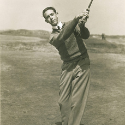
Joe Carr
Born in Inchicore, Ireland in 1922, Carr was the greatest Irish amateur of all-time, winning three British Amateur titles (1953, ’58, ’60). He went on to win twelve East of Ireland titles, 12 West of Ireland titles, six Irish Amateur Close Championships, four Irish Amateur Opens, and three South of Ireland titles. He was a semi-finalist at the U.S. Amateur in 1961, and was low amateur at The Open Championship in both 1956 and 1958 (and finished 8th overall in 1960). In 1961 he became the first non-American to receive the USGA’s Bob Jones Award for distinguished sportsmanship. In 1967, he became the first native Irishman to play in the Masters. Carr was chosen the captain of The Royal and Ancient Golf Club of St Andrews in 1991, becoming the first Irishman to hold the post.
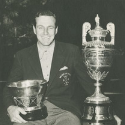
Dick Chapman
A dominant player in the 1940s and ‘50s, Chapman won the U.S. Amateur in 1940, the Canadian Amateur in 1949 and the British Amateur in 1951. He also won the French Open Amateur twice (1939 and ’52) along with state amateur championships in Connecticut, Massachusetts, New York and the Carolinas. He also made 19 starts at the Masters, which, along with Charlie Coe, is a record for an amateur. Born in Greenwich, Conn. in 1911, Chapman played in winning Walker Cup teams in 1947, 1951, and 1953 and is one of only two players who has won the U.S., British, and Canadian Amateur Championships.
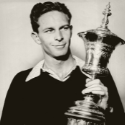
Charlie Coe
Born in Ardmore, Pa., Coe served as a pilot during World War II before attending the University of Oklahoma, where he won three consecutive Big Seven Conference championships from 1946-49. He won the U.S. Amateur in 1949, drumming Rufus King, 11 and 10 in the finals, and won it again in 1958 with a 5 and 4 win over Tommy Aaron. He lost in the finals to Jack Nicklaus in the 1959 tournament at The Broadmoor, 1 up. Coe won the Western Amateur in 1950 and collected four Trans-Miss Amateur championships (1947, ’49, ’52 and ’56). He played in six Walker Cup Matches from 1949 to 1963 including playing captain on the 1959 team, and was non-playing captain on a seventh team in 1957. Coe made 19 Masters Tournament appearances and owns almost every Masters amateur record, including most cuts made (15); top-25 finishes (9); top-10 finishes (3); rounds played (67) and most times low amateur (6). Coe won low amateur honors at Augusta in four consecutive decades: 1940s, 1950s, 1960s and 1970s. He also holds the amateur records for best finish (2nd in 1961), lowest third-round score (67 in 1959), and lowest 72-hole score (281 in 1961).[9] In 1961, Coe rallied in the final round from six shots down to finish one stroke behind Gary Player.
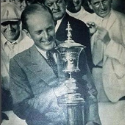
George Dunlap
Born in Kearney, New Jersey in 1913, Dunlap was one of the preeminent amateurs during the 1930s. A Princeton man, he won the intercollegiate championship in 1930 and ’31 and helped the Tigers to the national championship in 1930. He won the U.S. and British Amateur in 1933 and repeated as the British Am champion in 1934. Dunlap captured seven North and South Amateurs from 1931-42, including four in a row from 1933-36 and played on three winning Walker Cup teams (1932, ’34 and ’36).
Chandler Egan
The Chicago native won led the Harvard men’s golf team to three consecutive national titles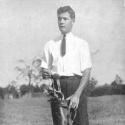
from 1902-04 and won the individual national championship in 1902. He went on to win back-to-back U.S. Amateurs in 1904 and ’05 and also won the individual golf silver medal at the 1904 St. Louis Summer Olympics. After his runner-up finish at the 1909 U.S. Amateur, Egan disappeared from the amateur circuit, only to resurface in 1914 with a runner-up finish to Jack Neville at the Pacific Northwest Amateur. A year later, Egan defeated Neville and would win the Pacific Northwest Amateur four more times. He added the California State Amateur to his resume in 1926 and played on two U.S. winning Walker Cup teams in 1930 and ’34. Egan also made his mark in golf course architecture, designing such Oregon courses as the Eugene Country Club, Eastmoreland Golf Course, Oswego Lake Country Club, Riverside Golf & Country Club, Tualatin Country Club, and Waverley Country Club. In 1929, Egan partnered with legendary golf architect Alister MacKenzie to renovate Pebble Beach Golf Links. He also designed the Indian Canyon municipal course in Spokane, Wash.
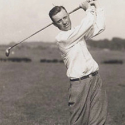
Chick Evans
One of the legendary names in amateur golf, Chick Evans became the first amateur to win both the U.S. Open and U.S. Amateur in the same year (1916). He added his second U.S. Amateur title in 1920 and holds the record with eight Western Amateur titles. Evans played on three Walker Cup teams (1922, ’24 and ’28) and competed in a record 50 consecutive U.S. Amateurs. He also founded the Evans Scholarship Foundation, which provides college scholarships to qualified caddies. In 1960, he received the Bob Jones Award, the highest honors given by the USGA in recognition of distinguished sportsmanship in golf and was inducted into the World Golf Hall of Fame in 1975.
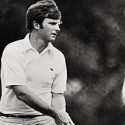
Vinny Giles
Giles is the only player to have ever won the U.S. Amateur (1972), British Amateur (1975) and U.S. Senior Amateur Championships (2009). He’s also appeared on five Walker Cup teams (including one as a non-playing captain), finished as the low amateur at the Masters and claimed seven Virginia State Golf Association Amateur titles. He was the low amateur at three different U.S. Senior Open Championships. He made the cut in both U.S. Opens that he played.

Stewart Hagestad
Former U.S. Walker Cup captain Spider Miller, 71, called Hagestad “one of the best amateur golfers who didn’t turn pro in my lifetime.” He certainly boasts a resume that puts him high on the list of modern day amateurs who never turned pro. A graduate of USC, Hagestad has won two U.S. Mid Amateur Championships, represented the United States on three winning Walker Cup teams. and became the first invited U.S. Mid-Amateur champion to make the cut at the Masters in 2017. His first U.S. Mid-Amateur win came at Stonewall Links in Elverson, Pa., when he trailed by four holes with five remaining, only to pull out the victory on the 37th hole. The win earned Hagestad a trip to the Masters, where he became the first invited U.S. Mid-Amateur champion to make the cut and the first to capture Low Amateur honors since Jay Sigel in 1988. Last summer, he won his second U.S. Mid-Amateur title at Sankaty Head Golf Club on Nantucket Island. Hagestad has competed in 12 U.S. Amateurs, reaching the Round of 16 in 2020 at Bandon Dunes and 2018 at Pebble Beach.
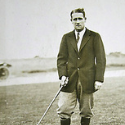
Harold Hilton
Hilton became the first Englishman to win the U.S. Amateur when he defeated Fred Herreshoff on the 37th hole at the Apawamis Club in Westchester County, NY in 1911. In 1892, he won the Open Championship at Muirfield, becoming the second amateur to do so, and captured the title again in 1897 at his home club of Royal Liverpool. Hilton won the Amateur Championship on four occasions including in 1911, when he became the only British player to win the British and U.S. Amateurs in the same year. Following his playing days, Hilton turned to golf writing and was the first editor of Golf Monthly and worked for Golf Illustrated.
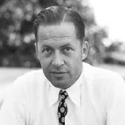
Bobby Jones
The greatest amateur of all time, Jones won a record five U.S. Amateur titles (1924, ’25, ’27, ’28 and ’30), four U.S. Opens and three Open Championships. In his 13 years of major competition, Jones was a student in high school or college in nine of them. He played in 52 tournaments in that span, an average of four a year, and won 23 of them. In 1930, he won golf’s grand slam after winning the U.S. Open, British Open, British Amateur and U.S. Amateur in the same year. He then retired from competitive golf at the age of 28 and shortly thereafter, bought the land and teamed to legendary course architect Alister Mackenzie to design Augusta National Golf Club. Jones also co-founded the Masters, which has been held annually at Augusta since 1934 except 1943-45 due to World War II.
Ernest W. “Trip” Kuehne III
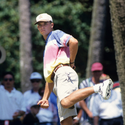
Kuehne represented the United States on three Walker Cup teams (1995, 2003 and ’07), played in four U.S. Opens and two Masters. After beginning his collegiate career at Arizona State, Kuehne transferred to Oklahoma State where he was a three-time All-American and the recipient of the 1995 Ben Hogan Award. He is arguably most remembered for his defeat at the hands of Tiger Woods in the 1994 U.S. Amateur held at TPC Sawgrass when he lost a 5-up lead with 12 holes remaining. Thirteen years after that heartbreaking loss, Kuehne claimed his only USGA championship by defeating Dan Whitaker, 9 and 7 at the 2007 U.S. Mid-Amateur at Bandon Dunes. He was the third member of his family to win a USGA championship, joining his sister Kelli (1994 U.S. Girls’ Junior; 1995 and ’96 U.S. Women’s Amateur) and brother Hank (1998 U.S. Amateur). He stepped away from competitive golf after the 2008 Masters to focus on his investment broker business, Double Eagle Capital in his hometown of Dallas.
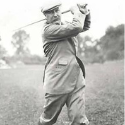
Charles B. Macdonald
C.B. Macdonald played an instrumental role in shaping the game of golf in America. Considered the father of American golf course architecture, Macdonald designed some of the world’s greatest courses played to this day, including Chicago Golf Club and National Golf Links of America. He is also credited with building the first 18-hole course in America in 1893 in Downers Grove, Ill. Macdonald was a driving force in the founding of the United States Golf Association and won the first-ever U.S. Amateur in 1895, defeating Jack Sands, 12 and 11 at Newport Country Club.
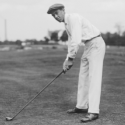
Francis Ouimet
Francis Ouimet became America’s first golf hero when he won the 1913 U.S. Open at The Country Club in Brookline where he defeated British legends Harry Vardon and Ted Ray in a playoff. Ouimet’s stunning win captured the imagination of sports fans everywhere and changed the perception of the game being exclusively for the rich. He proved his historical U.S. Open win was no fluke, winning his first of two U.S. Amateur championships the following year. Seventeen years later in 1931, he would add his second. He participated in the first 12 Walker Cups, the first eight as a player and the other four as a captain. He went 11-1. He was also the first non-Briton elected as the Captain of the Royal and Ancient Golf Club. in 1955 was the first-ever winner of the Bob Jones Award, the highest honor given by the USGA, in recognition of distinguished sportsmanship in golf.
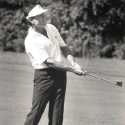
Dick Siderowf
Siderowf enjoyed one of the greatest amateur careers of the second half of the 20th century. In addition to winning two British Amateur championships (1973 and ’76), the former Duke golfer was a five-time winner of both the Connecticut and Metropolitan Amateurs and also won the Northeast Amateur on two occasions. Siderowf is also a past champion of the Canadian, New England and Sunnehanna Amateurs. He played on five winning Walker Cup (1969, 1973, 1975, 1977 and 1979 as a captain) and two Eisenhower Trophy teams, in 1968 (winning) and 1976. In 1982, Siderowf attempted to become the first American to win the British Amateur three times but lost in the fourth round to South African Wilhelm Winsnes.
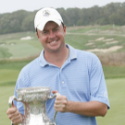
Nathan Smith
Nathan Smith has compiled one of the best amateur resumes of the modern era. The Pittsburgh, Pa. native is a four-time winner of the U.S. Mid-Amateur, the 2011 Sunnehanna Amateur the 2002 and 2009 Pennsylvania Amateur, the West Penn Amateur four times (2007–10), and the R. Jay Sigel Match Play three times (2011, 2013, 2015). With his partner Todd White, he also won the inaugural U.S. Amateur Four-Ball at the famed Olympic Club in 2015. To cap it off, Smith played in three consecutive Walker Cup matches representing the Unites States in 2009, 2011 and 2013. He will captain the 2025 United States team at the 2025 Walker Cup Matches at Cypress Point.
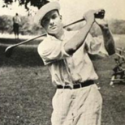
Jess Sweetser
Sweetser won the 1920 NCAA men’s individual title while at Yale and two years later, won the 1922 U.S. Amateur at the age of 22, when he defeated Bobby Jones, 8 and 7 in the semifinals and Chick Evans, 3 and 2 in the title match. He won the British Amateur at Muirfield in 1926, marking the first time an American-born golfer had won the tournament (The 1904 winner, Walter Travis, was a naturalized American citizen born in Australia). Sweetser added a pair of Metropolitan Amateurs in 1922 and ’25 and was a member of the first Walker Cup team in 1922. He also played on the 1923, ’24, ’26, ’28 and ’32 teams and was a non-playing captain for the 1967 and ’73 teams. Sweetser also served as treasurer and on the executive committee of the United States Golf Association. In 1986, he was named the Bob Jones Award winner, given in recognition of distinguished sportsmanship in golf.

Freddie Tait
Born on January 11, 1870 in Edinburgh, Scotland, Tait was a leading golfer at the end of the 19th century and was a contemporary of the likes of Johnny Ball, Harold Hilton, Harry Vardon and J.H. Taylor. Noted for being prodigious off the tee, Tait played only nine years of competitive golf before he was tragically killed aged 30 in Koodoosberg, South Africa while serving his country in the Second Boer War. During his short career, he won two British Amateur Championships (1896 and 1898), tied for third in the 1896 and 1897 Open Championships and finished as the leading amateur at the Open Championship on six occasions. Between 1892 and 1899, he played in eight Amateurs and won 30 of his 36 (83.3%). Shortly after his death in battle, John L. Low authored, ‘F.G. Tait – A Record; Being his Life, Letters and Golfing Diary’ which was published in 1900 and is regarded as one of the first golf biographies ever written. Tait’s portrait hangs in the R&A clubhouse and the 16th hole of the Jubilee Course at St. Andrews is also named ‘Freddie Tait’ in his honor.To this day, The Freddie Tait Cup is awarded to the leading amateur at the South African Open Championship.
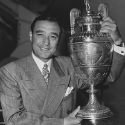
Willie Turnesa
Born in Elmsford, NY in 1914, Turnesa was one of seven well-known golfing brothers. His older brothers forbade him to turn professional and pooled their money to send him to college. He graduated from Holy Cross in 1938 and won his first of two U.S. Amateurs later that year at Oakmont Country Club. After winning the British Amateur in 1947 at Carnoustie, beating fellow American Dick Chapman, 3 and 2 in the final, he added a second U.S. Amateur title in 1948 at Memphis Country Club, when he gave Ray Billows his third runner-up finish in the event. Turnesa played on three straight winning Walker Cup teams, 1947, 1949, and 1951, where he also served as the playing captain. He also served as president of both the Metropolitan Golf Association and New York State Golf Association.
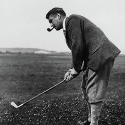
Cyril Tolley
A two-time winner of the Amateur Championship in 1920 and 1929, Tolley nearly won a third title in 1930 when he lost to Bobby Jones on the 19th hole at St. Andrews after he found himself stymied within four feet of the hole. Tolley also won the French Amateur in 1924 and ’28 and a pair of Welch Amateur championships in 1921 and ’23. He was named to the first Walker Cup team in 1922 and again in 1923, ’24, ’26, ’30 and ’34. He captained the Royal and Ancient team in 1948.
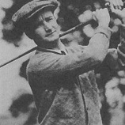
Jerry Travers
Born on May 19, 1897 in New York City, Jerome “Jerry” Travers won 10 tournament titles in the early 1900s, including four U.S. Amateurs (1907, ’08, ’12 and ’13) and added a victory at the 1915 U.S. Open at Baltusrol Golf Club. Oddly, Travers never entered the Open again after winning in 1915 and during his heyday, he twice didn’t enter the U.S. Amateur. He stepped away from competitive golf at the age of 28 and concentrated on teaching. Travers was enshrined in the World Golf Hall of Fame in 1976.
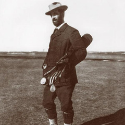
Walter Travis
Although he didn’t pursue competitive golf until the age of 34, Travis more than made up for lost time, winning the U.S. Amateur in 1900, 1901, and 1903. The Australian-born Travis competed in six U.S. Opens between 1902 and 1912 and was low amateur five times and tied for third low amateur the other. In 1904, he became the first American to win the British Amateur, which sparked interest in the game throughout the United States. Travis also won three North and South Amateurs at Pinehurst and four Metropolitan Golf Association Championships. His fourth MGA title came in 1915 when the 53-year-old Travis defeated 28-year-old Jerome Travers in the championship match. He retired from competitive golf in 1916 and following his plays days, founded The American Golfer Magazine. His most enduring legacy may be the many premier golf courses he designed or remodeled throughout his career, including the Country Club of Scranton, Ekwanok Country Club, Westchester Country Club’s West course, Hollywood Golf Club and Garden City Golf Club. He was inducted into the World Golf Hall of Fame in 1976.
• • • • •
Related: 5 amateur records that will never be broken (and 5 that might be)
• • • • •
The Top Female Amateurs Who Never Turned Pro

Dorothy Campbell
Born in Edinburgh, Scotland in 1883, Campbell grew up playing on the famed North Berwick course and was the first woman to win the American, British and Canadian Women's Amateurs. She first came into the public eye in 1905 at the age of 22 when she played on the British team that trounced an American squad led by sisters Harriot and Margaret Curtis in a match called “America versus England,” which was a predecessor of the Curtis Cup Match. That same year, Campbell won her first Scottish Ladies Championship, a title she claimed on two other occasions (1906 and ’08). Her first of three U.S. Women’s Amateur championships came at Merion Golf Club in 1909, when she defeated Nona Barlow to become the first foreign-born player to win the championship and the first to hold the British and American titles at the same time. Campbell moved to Canada in 1910 and won the first of three straight Women’s Canadian Open Amateur championships. Three years later, moved to the United States and successfully defended her U.S, Women’s Amateur championship at Homewood Country Club in Flossmoor, Ill. In 1924 at the age of 41, she won her third and final U.S. Women’s Amateur Championships at Rhode Island Country Club. She continued to play throughout the 1930s and won the 1938 U.S. Senior Women’s Championship at the age of 55. She died tragically in a railway accident on March 20, 1945 in Yemassee, S.C. when she fell off a platform and into the path of an oncoming train. In 1978, Dorothy Campbell was inducted into the World Golf Hall of Fame.
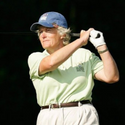
Patricia Cornett
Dr. Patricia Cornett has played in more than 50 USGA championships, starting with the 1971 U.S. Girls’ Junior. She has competed in eight U.S. Women’s Open Championships and was the runner-up in the 1987 U.S. Women’s Mid-Amateur and a semifinalist in that championship in 1992 and 1999. She also advanced to the semifinals of the 1976 and 1992 U.S. Women’s Amateurs. A member of the 1978 and 1988 USA Curtis Cup Teams, and captain in 2012, she also won the 1990 Women’s Western Amateur. A graduate of Stanford University and the Medical College of Pennsylvania, she continues to work full-time in non-malignant hematology and serves as associate chair for the education department of medicine at the University of California-San Francisco.
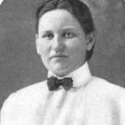
Margaret Curtis
The youngest of 10 children from Manchester-by-the Sea, Mass., Margaret Curtis won three U.S. Women’s Opens (1907, ’11, ’12). Her cousin Laurence Curtis, who served as the second President of the United States Golf Association in 1897–98, encouraged the family to take up the game of golf and as a result, Margaret and her sister Harriot began playing golf at a young age and as young ladies became members of the Women's Golf Association of Massachusetts. Founded in 1900, it was the first state women's golf association in the United States. Besides her skill at golf, Curtis was an excellent tennis player. In 1908 she won the U.S. Open doubles tennis championship with Evelyn Sears, becoming the only woman to simultaneously hold the U.S. golf and tennis titles.
In 1904, Curtis was a student at Simmons College School of Social Work in Boston, training that would lead to her being a board member of the Family Service Society for 51 years. With her career over in competitive golf, during World War I, she went to Paris, France where she joined the Red Cross, serving as the head of its Bureau for Refugees for three years. Her time in Paris marked the beginning of several more years spent in various places across Europe with the Red Cross. She is the only golfer to be the recipient of France's Legion of Honor medal.
In 1932, Curtis and her sister donated the Curtis Cup for a biennial golf competition between amateur teams representing the United States and Great Britain. She remained active in golf matters for most of her life. Curtis was the recipient of the 1958 Bob Jones Award, the highest honor given by the United States Golf Association in recognition of distinguished sportsmanship in golf. She died in 1965 at the age of 82.
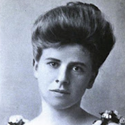
Genevieve Hecker
Born on November 19, 1883 in Darien, Conn., Genevieve Hecker was a two-time winner of the U.S. Women’s Amateur Championship, defeating Lucy Herron, 5 and 3 at Baltusrol in 1901 and Louisa Wells, 4 and 3 at the Country Club in Brookline in 1902, 11 years before Francis Ouimet’s historical victory at the Country Club. Hecker also won the 1900 and 1901 Women's Metropolitan championships (staged by the Women's Metropolitan Golf Association in New York) were the first two times that tournament was played. She was only 16 years old at the time of her first win. She also wrote write “Golf For Women,” the first instruction book written specifically for women. Hecker married Charles Stout in 1903 and would take a break from competitive golf for nearly 20 years while she raised her family. In 1925, she won the New York Women’s Metropolitan Golf Championship at Siwanoy Country Club at age 41, labeled as “one of the most remarkable comebacks in the history of golf” by the New York Times. She passed away on July 29, 1960 in Brooklyn, NY.
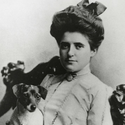
Beatrix Hoyt
Long before Bob Jones, Jack Nicklaus and Tiger Woods were recognized as teenage golf sensations, Beatrix Hoyt captured America’s attention with her outstanding performances in national championships beginning at the age of 16. Born on July 5, 1880, the Shinnecock Hills Golf Club member won the 1896, ’97 and ’98 U.S. Women’s Amateurs. Hoyt is the third youngest golfer to ever win the U.S. Women's Amateur and is one of only five competitors to win the championship three consecutive times. At age 19, she retired from competitive golf after losing to Margaret Curtis in the semi-final round at the 1900 tournament, ultimately pursuing a career in sculpture and landscape painting.
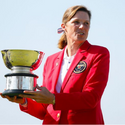
Sarah LeBrun Ingram
The Nashville, Tenn. native won three U.S. Women’s Mid-Amateur titles (1991, 1993, 1994) and competed on three Curtis Cup teams (1992, ’94, ’96) two World Amateur Team events. She captained the USA Curtis Cup teams to victory in 2021 and ’22. Ingram won the 1991 U.S. Women's Mid-Amateur with a 6-and-5 victory over Martha Lang at Desert Highlands Golf Club in Scottsdale, Ariz. Ingram then won back-to-back titles in 1993 and 1994, defeating Mary Burkhardt, 2 and 1, at Rochester (Minn.) Golf & Country Club and Marla Jemsek, 2 and 1, at Tacoma (Wash.) Country & Golf Club. In addition, Ingram was low amateur in the 1995 U.S. Women's Open at The Broadmoor in Colorado Springs, Colo., and played in two World Amateur Team Championships, including for the victorious USA Team in 1994 at Le Golf National in Versailles, France. Ingram was a two-time All-American and four-year letterwinner for the Blue Devils from 1985 to 1988, and was at one time the top-ranked women's amateur golfer in the world. Ingram is a member of the Duke University Sports Hall of Fame, the Tennessee Sports Hall of Fame and the Tennessee Golf Hall of Fame. She won the 1986 and 1987 Maryland State Women's Amateurs, the 1990 Canadian Women's Amateur, the 1991 Women's Western Amateur and Tennessee State Championship, the 1992 Broadmoor Women's Invitational and the 1993 Women's Southern Amateur.
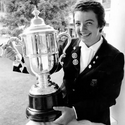
Catherine Lacoste
The daughter of French tennis champion and clothing entrepreneur René Lacoste, Lacoste remains the only amateur ever to win the U.S. Women’s Open, a feat she accomplished in 1967 at the Cascades Course of The Homestead, in Hot Springs, Virginia. Sports Illustrated described her victory as the biggest upset in golf since Francis Ouimet in the 1913 U.S. Open. Her victory at The Homestead in 1967 fell during a two-year stretch when she won the Women’s Western Amateur and the national championships in the United States, Great Britain, France and Spain concurrently holding all four titles. Lacoste was part of the French team that won the first Women’s World Amateur Team Championship in 1964. She retired from competitive golf at the age of 30 but remained involved in the game by serving as president of Golf de Chantaco from 1974 to 2009.

Barbara McIntire
Born in Toledo, Ohio in 1935, won a total of nineteen major women’s amateur titles, including two U.S. Women’s Amateurs, played on six Curtis Cup teams and captained a seventh. McIntire first made a splash on the national scene at the age of 15 at the 1950 U.S. Women’s Amateur when she eliminated six-time champion Glenna Collett Vare in the opening round. In 1956 as a student at Rollins College, McIntire came close to becoming the first amateur to win the U.S. Women's Open when she was tied with professional Kathy Cornelius at the end of regulation play but lost in the ensuing playoff. In 1957, she won the first of her six North and South Women's Amateurs and her first of two U.S. Women’s Amateur titles in 1959 at steamy Congressional Country Club outside of Washington D.C. She would win the U.S. Women’s Amateur again in 1964, defeating JoAnne Gun-der¬son, 3 and 2 in the final at Prairie Dunes Country Club in Hutchinson, Kan. She also captained two USA Curtis Cup Teams, was chairman of the USGA Women’s Committee and in 2000, won the Bob Jones Award, the USGA’s highest honor for a lifetime of distinguished sportsmanship.
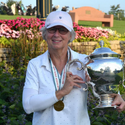
Ellen Port
Ellen Port is a seven-time USGA champion with four U.S. Women’s Mid-Amateur (1995, ’96, 2000, ’11) and three U.S. Senior Women’s Amateur (2012, ’13, ’16) to her credit. Port is tied with Anne Quast Sander and Carol Semple Thompson for second among female USGA champions with seven titles, trailing only JoAnne Carner (eight). Port made history in 2021 by becoming the first woman to win the Met Senior Amateur, the Metropolitan Amateur Golf Association's premier senior men's championship, prevailing in a four-hole playoff. Port has also made three Curtis Cup appearances, two as a player and one as a coach, and has won a staggering 16 Metropolitan Women’s Amateur titles. Born on September 21, 1961 in Kansas City, Mo., Port has been recognized by the St. Louis Regional Chamber and Growth Association as one of St. Louis’ Top-100 athletes of all time and is a member of three halls of fame.
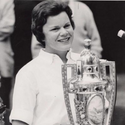
Anne Quast Sander
Born on August 31, 1937 in Everett, Washington, Anne Quast Sander won the U.S. Women's Amateur three times (1958, 1961, 1963) and finished runner-up on three other occasions (1965, 1968, 1973). She was a member of the U.S. Curtis Cup team across five decades (1958, 1960, 1962, 1966, 1968, 1974, 1984, 1990) and her eight appearances ranks her second all-time to Carol Semple. She was also a member of the Espirito Santo Trophy team in 1966, 1968 and 1988. In 1980, she won the British Ladies Amateur and claimed North and South Women’s Amateur titles in 1982 and ‘83. In her first year of eligibility at age fifty, Quast won the 1987 U.S. Senior Women’s Amateur and added three more titles in 1989, 1990 and 1993.
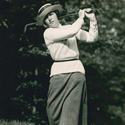
Alexa Stirling
Alexa Stirling Fraser was born in Atlanta, Ga., on September 5, 1897. As Bobby Jones’ childhood golfing partner, she was dubbed “The First Lady of East Lake” and “The Empress of Golf” to complement Jones’ “Emperor” nickname. She won her first title at East Lake at the young age of 12. In 1916, three days before her 19th birthday, she won the first of her three U.S. Women’s Amateur Championships. When the Championship resumed after World War I, she successfully defended her crown in 1919 and ‘20, and placed second in that same tournament in 1921, ‘23 and ‘25. In 1920 and ‘34 she won the Canadian Women’s Open, and she finished second in 1922 and ‘25. Throughout her life she maintained her interest in golf and was as an honorary member of the Royal Ottawa Golf Club. She returned to Atlanta for the 1976 U.S. Open shortly before her death. She died in Canada on April 15, 1977.

Marlene Stewart Street
Canada’s most successful amateur golfer, Marlene Stewart Street still remains the only golfer in history to have won the Australian, British, Canadian and U.S. Women's Amateurs. Her numerous tournament victories include 11 Canadian Ladies Open Amateur Championships, nine Canadian Ladies Close Amateur Championships, four Canadian Ladies Senior Amateur Championships and three U.S. Senior Women’s Amateur titles, her last coming in 2003. She also holds a USGA record for the longest final match in the 1966 U.S. Women’s Amateur when lost to JoAnne Gunderson Carner on the 41st hole at Sewickley Heights (Pa.) Golf Club. Over her long career, she won 30 national or international amateur championships, with at least one championship in six different decades from 1951 – 2003 on three different continents: North America (Canada – 24; United States – 4; Great Britain – 1; Australia – 1). She was inducted into the World Golf Hall of Fame in 2004.
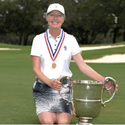
Lara Tennant
A native of Portland, Ore., Lara Tennant won three consecutive U.S. Senior Women's Amateur titles (2019, ’20 and ’21) along with the 2020 California Senior Women’s Amateur and 2019 R&A Women’s Senior Amateur Championship. Tennant, who played collegiately at the University of Arizona, is a four-time Oregon Senior Women’s Amateur champion and has won the Oregon Coast Invitational a remarkable 12 times. She was one of seven amateurs to make the cut in the 2021 U.S. Senior Women’s Open and finished in a tie for 29th. Tennant made the first hole-in-one in U.S. Senior Women’s Open history in the inaugural championship at Chicago Golf Club on the 163-yard 7th hole.
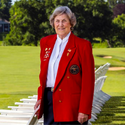
Carole Semple Thompson
The most honored female amateur of all-time, Carole Semple Thompson is a World Golf Hall of Famer who has won seven USGA championship titles, which is tied for second-most among all women in victories with Ellen Port, one behind JoAnne Carner. Thompson has competed on a record 12 USA Curtis Cup Teams and has captained another two teams. Thompson competed in the 2021 U.S. Senior Women’s Open at Brooklawn Country Club in Fairfield, Conn., and is competing in her first U.S. Senior Women’s Amateur since 2014 at Hollywood Golf Club in Deal, N.J. With 32 appearances in the U.S. Women's Open, only one woman has played in it more often. She and the late Arnold Palmer are the only two golfers from western Pennsylvania in the World Golf Hall of Fame. She holds the record for most appearances (12) in the Curtis Cup, a biennial match pitting a team of U.S. women against a team from Great Britain/Ireland. She was the 2003 winner of the Bob Jones Award, golf’s highest honor.

Virginia Van Wie
Van Wie, who competed from 1925 through 1934, was Chicago’s greatest female golfer and is best known for winning three consecutive U.S. Women’s Amateur titles from 1932-34. She first gained notoriety in the summer of 1925 when she won the Western Michigan and Western Junior Championships and a year later, she stunned the golf world by beating the reigning U.S. Women’s Amateur champion, Glenna Collett, for the East Coast Florida championship. She beat Collett again to win her first of three consecutive U.S. Women’s Amateur Championships in 1932 at Salem Country Club in Peabody, Mass. After winning her third straight U.S. Women’s Amateur title in 1934, she was named the Associated Press’ Female Athlete of the Year and was proclaimed as the “world’s greatest female golfer.” She played on two Curtis Cup teams and was one of the six charter inductees to the Women’s Golf Hall of Fame in 1950, established by the Ladies Professional Golf Association. In 1951, she was elected to the Helms Golf Hall of Fame and in 1993, was inducted into the Illinois Golf Hall of Fame. She retired from competitive golf in 1934 when she simply walked away from the game seemingly in her prime without any formal announcement. She became a teaching professional in 1955, giving lessons at an indoor facility on the South Side of Chicago. She passed away on February 18, 1997 in Big Rapids, Mich.
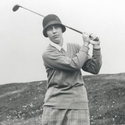
Glenna Collett Vare
America’s “First Lady of Golf,” Glenna Collett Vare, dominated the field of women’s golf in the 1920s, winning six U.S. Amateur Championships, two Canadian Ladies Opens, and the French Ladies Open. She learned to play golf when she was 14 and won her first U.S. Women’s Amateur championship in 1922. She regained this title five times (1925, 1928–30, and 1935) and was runner-up twice (1931 and 1932). She won the Canadian championship in 1923 and 1924 and the French championship in 1925. In the mid-1920s she won 59 of 60 consecutive matches in tournament play. She was the captain of the American team in the Curtis Cup competition against Britain in 1934, 1936, and 1948.
She continued to play well into her 80s and was inducted into both the World Golf Hall of Fame in 1975 and the International Women’s Sports Hall of Fame. In 1931, Glenna Collett married Edwin Vare and began a family, producing two children. Though she took up more traditional activities like needlepoint, Vare continued to make her way to the golf course when time permitted. In 1987, at the age of 83, she played her 62nd Point Judith Invitational. She passed away in 1989.
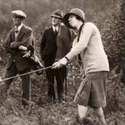
Joyce Wethered
We are going to take some literary license here and include the Great Lady of Golf on our list, despite the fact the USGA declared her ineligible to compete as an amateur for 20 years (1934-54) because of her involvement in a U.S. exhibition tour with Walter Hagen aimed to market steel shafted golf clubs in her name. Playing out of the Worplesdon Golf Club in Surrey, England, Wethered is considered one of the most talented golfers of the early 20th Century. She won the British Ladies Amateur four times (1922, 1924, 1925, and 1929) and the English Ladies' Amateur Championship for five consecutive years (1920–24). Before the 1930 British Amateur Championship, legendary amateur Bobby Jones had the chance to play a practice round over the Old Course at St. Andrews with Wethered. Both played off the back tees and, after Wethered putted out for a 75, Jones said. “I have not played golf with anyone, man or woman, amateur or professional who made me feel so utterly outclassed.” Wethered served as the first captain for Great Britain & Ireland in the inaugural Curtis Cup held in 1932. She was inducted into the World Golf Hall of Fame in 1975 and passed away in 1997 at the age of 96.
Nicklaus, Woods and Sorenstam, winners of a combined 43 majors, simply didn't qualify.
However, you'll find the likes of Dick Chapman, Willie Turnesa and Cyril Tolley on this list, along with Chick Evans, John Ball, Jr., and Harold Hilton, along with Margaret Curtis, Carole Semple Thompson, Catherine Lacoste and Ellen Port.
While many of today's young players are able to parlay their successful amateur careers into lucrative professional careers, there are many who left their marks on the game, both on and off the course, as lifelong amateurs.
Here's our list of the top amateurs who never turned professional. The players are listed alphabetically -- we'll leave the rankings up to others.
• • • • •
The Top Male Amateurs Who Never Turned Pro

The game’s first great amateur golfer, Ball was the first Englishman and the first amateur to win The Open in 1890. The son of the manager of the Royal Hotel at Hoylake, he grew up playing on the links of Royal Liverpool and won the British Amateur eight times (1888, 1890, 1892, 1894, 1899, 1907, 1910, 1912) between 1888 and 1912. He also won the Irish Amateur championship on four occasions. He spent three years fighting in the Boer War and at the age of 60 still reached the last 16 of the Amateur. Ball was inducted into the World Golf Hall of Fame in 1977.

Born in Chigwell, Essex in 1934, Bonallack had a tremendously impactful career on and off the golf course. He won the British Amateur Championship and the English Amateur five times each and the Brabazon Trophy four times. He was a member of nine Walker Cup teams and played in the Eisenhower Trophy seven times. His best finish at the Open Championship was 11th in 1959. He was also the leading amateur at the Open in 1968 and 1971. Bonallack served as the Secretary of The Royal and Ancient Golf Club of St Andrews from 1983 to 1999 and Captain from 1999 to 2000. In 1972, he was awarded the Bob Jones Award, which the highest honor given by the United States Golf Association in recognition of distinguished sportsmanship in golf and in 1998, he was knighted by Queen Elizabeth for his services to golf. Bonallack was inducted into the World Golf Hall of Fame in 2000.

A native of Huntington, W. Va., Campbell’s amateur career spanned 37 U.S. Amateurs, including 33 consecutively from 1941–77. He won the event in 1964 at Canterbury Golf Club in his 21st appearance. Campbell also played in 15 U.S. Opens, 18 Masters and was part of eight Walker Cup teams. He was runner-up in the 1954 British Amateur and three times runner-up in the Canadian Amateur Championship, in 1952, 1954, and 1965. Campbell won three West Virginia Opens, four North and South Amateurs, and fifteen West Virginia Amateur titles. He also won the U.S. Senior Amateur in 1979 and 1980 and finished second overall in the 1980 U.S. Senior Open. Campbell had a long and distinguished career with the USGA, serving on the Executive Committee from 1962–1965, and again from 1977 to 1984. He was the treasurer in 1978–1979, vice-president in 1980–1981, then served as president in 1982 and 1983. In 1987, he was named Captain of The Royal and Ancient Golf Club of St Andrews, just the third American to hold that post, becoming the first person to head both of golf’s main governing bodies. In 1956, Campbell was awarded the Bob Jones Award, the USGA’s highest honor and was inducted to the World Golf Hall of Fame in 1990.

Born in Inchicore, Ireland in 1922, Carr was the greatest Irish amateur of all-time, winning three British Amateur titles (1953, ’58, ’60). He went on to win twelve East of Ireland titles, 12 West of Ireland titles, six Irish Amateur Close Championships, four Irish Amateur Opens, and three South of Ireland titles. He was a semi-finalist at the U.S. Amateur in 1961, and was low amateur at The Open Championship in both 1956 and 1958 (and finished 8th overall in 1960). In 1961 he became the first non-American to receive the USGA’s Bob Jones Award for distinguished sportsmanship. In 1967, he became the first native Irishman to play in the Masters. Carr was chosen the captain of The Royal and Ancient Golf Club of St Andrews in 1991, becoming the first Irishman to hold the post.

A dominant player in the 1940s and ‘50s, Chapman won the U.S. Amateur in 1940, the Canadian Amateur in 1949 and the British Amateur in 1951. He also won the French Open Amateur twice (1939 and ’52) along with state amateur championships in Connecticut, Massachusetts, New York and the Carolinas. He also made 19 starts at the Masters, which, along with Charlie Coe, is a record for an amateur. Born in Greenwich, Conn. in 1911, Chapman played in winning Walker Cup teams in 1947, 1951, and 1953 and is one of only two players who has won the U.S., British, and Canadian Amateur Championships.

Born in Ardmore, Pa., Coe served as a pilot during World War II before attending the University of Oklahoma, where he won three consecutive Big Seven Conference championships from 1946-49. He won the U.S. Amateur in 1949, drumming Rufus King, 11 and 10 in the finals, and won it again in 1958 with a 5 and 4 win over Tommy Aaron. He lost in the finals to Jack Nicklaus in the 1959 tournament at The Broadmoor, 1 up. Coe won the Western Amateur in 1950 and collected four Trans-Miss Amateur championships (1947, ’49, ’52 and ’56). He played in six Walker Cup Matches from 1949 to 1963 including playing captain on the 1959 team, and was non-playing captain on a seventh team in 1957. Coe made 19 Masters Tournament appearances and owns almost every Masters amateur record, including most cuts made (15); top-25 finishes (9); top-10 finishes (3); rounds played (67) and most times low amateur (6). Coe won low amateur honors at Augusta in four consecutive decades: 1940s, 1950s, 1960s and 1970s. He also holds the amateur records for best finish (2nd in 1961), lowest third-round score (67 in 1959), and lowest 72-hole score (281 in 1961).[9] In 1961, Coe rallied in the final round from six shots down to finish one stroke behind Gary Player.

Born in Kearney, New Jersey in 1913, Dunlap was one of the preeminent amateurs during the 1930s. A Princeton man, he won the intercollegiate championship in 1930 and ’31 and helped the Tigers to the national championship in 1930. He won the U.S. and British Amateur in 1933 and repeated as the British Am champion in 1934. Dunlap captured seven North and South Amateurs from 1931-42, including four in a row from 1933-36 and played on three winning Walker Cup teams (1932, ’34 and ’36).
Chandler Egan
The Chicago native won led the Harvard men’s golf team to three consecutive national titles


One of the legendary names in amateur golf, Chick Evans became the first amateur to win both the U.S. Open and U.S. Amateur in the same year (1916). He added his second U.S. Amateur title in 1920 and holds the record with eight Western Amateur titles. Evans played on three Walker Cup teams (1922, ’24 and ’28) and competed in a record 50 consecutive U.S. Amateurs. He also founded the Evans Scholarship Foundation, which provides college scholarships to qualified caddies. In 1960, he received the Bob Jones Award, the highest honors given by the USGA in recognition of distinguished sportsmanship in golf and was inducted into the World Golf Hall of Fame in 1975.

Giles is the only player to have ever won the U.S. Amateur (1972), British Amateur (1975) and U.S. Senior Amateur Championships (2009). He’s also appeared on five Walker Cup teams (including one as a non-playing captain), finished as the low amateur at the Masters and claimed seven Virginia State Golf Association Amateur titles. He was the low amateur at three different U.S. Senior Open Championships. He made the cut in both U.S. Opens that he played.

Former U.S. Walker Cup captain Spider Miller, 71, called Hagestad “one of the best amateur golfers who didn’t turn pro in my lifetime.” He certainly boasts a resume that puts him high on the list of modern day amateurs who never turned pro. A graduate of USC, Hagestad has won two U.S. Mid Amateur Championships, represented the United States on three winning Walker Cup teams. and became the first invited U.S. Mid-Amateur champion to make the cut at the Masters in 2017. His first U.S. Mid-Amateur win came at Stonewall Links in Elverson, Pa., when he trailed by four holes with five remaining, only to pull out the victory on the 37th hole. The win earned Hagestad a trip to the Masters, where he became the first invited U.S. Mid-Amateur champion to make the cut and the first to capture Low Amateur honors since Jay Sigel in 1988. Last summer, he won his second U.S. Mid-Amateur title at Sankaty Head Golf Club on Nantucket Island. Hagestad has competed in 12 U.S. Amateurs, reaching the Round of 16 in 2020 at Bandon Dunes and 2018 at Pebble Beach.

Hilton became the first Englishman to win the U.S. Amateur when he defeated Fred Herreshoff on the 37th hole at the Apawamis Club in Westchester County, NY in 1911. In 1892, he won the Open Championship at Muirfield, becoming the second amateur to do so, and captured the title again in 1897 at his home club of Royal Liverpool. Hilton won the Amateur Championship on four occasions including in 1911, when he became the only British player to win the British and U.S. Amateurs in the same year. Following his playing days, Hilton turned to golf writing and was the first editor of Golf Monthly and worked for Golf Illustrated.

The greatest amateur of all time, Jones won a record five U.S. Amateur titles (1924, ’25, ’27, ’28 and ’30), four U.S. Opens and three Open Championships. In his 13 years of major competition, Jones was a student in high school or college in nine of them. He played in 52 tournaments in that span, an average of four a year, and won 23 of them. In 1930, he won golf’s grand slam after winning the U.S. Open, British Open, British Amateur and U.S. Amateur in the same year. He then retired from competitive golf at the age of 28 and shortly thereafter, bought the land and teamed to legendary course architect Alister Mackenzie to design Augusta National Golf Club. Jones also co-founded the Masters, which has been held annually at Augusta since 1934 except 1943-45 due to World War II.
Ernest W. “Trip” Kuehne III


C.B. Macdonald played an instrumental role in shaping the game of golf in America. Considered the father of American golf course architecture, Macdonald designed some of the world’s greatest courses played to this day, including Chicago Golf Club and National Golf Links of America. He is also credited with building the first 18-hole course in America in 1893 in Downers Grove, Ill. Macdonald was a driving force in the founding of the United States Golf Association and won the first-ever U.S. Amateur in 1895, defeating Jack Sands, 12 and 11 at Newport Country Club.

Francis Ouimet became America’s first golf hero when he won the 1913 U.S. Open at The Country Club in Brookline where he defeated British legends Harry Vardon and Ted Ray in a playoff. Ouimet’s stunning win captured the imagination of sports fans everywhere and changed the perception of the game being exclusively for the rich. He proved his historical U.S. Open win was no fluke, winning his first of two U.S. Amateur championships the following year. Seventeen years later in 1931, he would add his second. He participated in the first 12 Walker Cups, the first eight as a player and the other four as a captain. He went 11-1. He was also the first non-Briton elected as the Captain of the Royal and Ancient Golf Club. in 1955 was the first-ever winner of the Bob Jones Award, the highest honor given by the USGA, in recognition of distinguished sportsmanship in golf.

Siderowf enjoyed one of the greatest amateur careers of the second half of the 20th century. In addition to winning two British Amateur championships (1973 and ’76), the former Duke golfer was a five-time winner of both the Connecticut and Metropolitan Amateurs and also won the Northeast Amateur on two occasions. Siderowf is also a past champion of the Canadian, New England and Sunnehanna Amateurs. He played on five winning Walker Cup (1969, 1973, 1975, 1977 and 1979 as a captain) and two Eisenhower Trophy teams, in 1968 (winning) and 1976. In 1982, Siderowf attempted to become the first American to win the British Amateur three times but lost in the fourth round to South African Wilhelm Winsnes.

Nathan Smith has compiled one of the best amateur resumes of the modern era. The Pittsburgh, Pa. native is a four-time winner of the U.S. Mid-Amateur, the 2011 Sunnehanna Amateur the 2002 and 2009 Pennsylvania Amateur, the West Penn Amateur four times (2007–10), and the R. Jay Sigel Match Play three times (2011, 2013, 2015). With his partner Todd White, he also won the inaugural U.S. Amateur Four-Ball at the famed Olympic Club in 2015. To cap it off, Smith played in three consecutive Walker Cup matches representing the Unites States in 2009, 2011 and 2013. He will captain the 2025 United States team at the 2025 Walker Cup Matches at Cypress Point.

Sweetser won the 1920 NCAA men’s individual title while at Yale and two years later, won the 1922 U.S. Amateur at the age of 22, when he defeated Bobby Jones, 8 and 7 in the semifinals and Chick Evans, 3 and 2 in the title match. He won the British Amateur at Muirfield in 1926, marking the first time an American-born golfer had won the tournament (The 1904 winner, Walter Travis, was a naturalized American citizen born in Australia). Sweetser added a pair of Metropolitan Amateurs in 1922 and ’25 and was a member of the first Walker Cup team in 1922. He also played on the 1923, ’24, ’26, ’28 and ’32 teams and was a non-playing captain for the 1967 and ’73 teams. Sweetser also served as treasurer and on the executive committee of the United States Golf Association. In 1986, he was named the Bob Jones Award winner, given in recognition of distinguished sportsmanship in golf.

Born on January 11, 1870 in Edinburgh, Scotland, Tait was a leading golfer at the end of the 19th century and was a contemporary of the likes of Johnny Ball, Harold Hilton, Harry Vardon and J.H. Taylor. Noted for being prodigious off the tee, Tait played only nine years of competitive golf before he was tragically killed aged 30 in Koodoosberg, South Africa while serving his country in the Second Boer War. During his short career, he won two British Amateur Championships (1896 and 1898), tied for third in the 1896 and 1897 Open Championships and finished as the leading amateur at the Open Championship on six occasions. Between 1892 and 1899, he played in eight Amateurs and won 30 of his 36 (83.3%). Shortly after his death in battle, John L. Low authored, ‘F.G. Tait – A Record; Being his Life, Letters and Golfing Diary’ which was published in 1900 and is regarded as one of the first golf biographies ever written. Tait’s portrait hangs in the R&A clubhouse and the 16th hole of the Jubilee Course at St. Andrews is also named ‘Freddie Tait’ in his honor.To this day, The Freddie Tait Cup is awarded to the leading amateur at the South African Open Championship.

Born in Elmsford, NY in 1914, Turnesa was one of seven well-known golfing brothers. His older brothers forbade him to turn professional and pooled their money to send him to college. He graduated from Holy Cross in 1938 and won his first of two U.S. Amateurs later that year at Oakmont Country Club. After winning the British Amateur in 1947 at Carnoustie, beating fellow American Dick Chapman, 3 and 2 in the final, he added a second U.S. Amateur title in 1948 at Memphis Country Club, when he gave Ray Billows his third runner-up finish in the event. Turnesa played on three straight winning Walker Cup teams, 1947, 1949, and 1951, where he also served as the playing captain. He also served as president of both the Metropolitan Golf Association and New York State Golf Association.

A two-time winner of the Amateur Championship in 1920 and 1929, Tolley nearly won a third title in 1930 when he lost to Bobby Jones on the 19th hole at St. Andrews after he found himself stymied within four feet of the hole. Tolley also won the French Amateur in 1924 and ’28 and a pair of Welch Amateur championships in 1921 and ’23. He was named to the first Walker Cup team in 1922 and again in 1923, ’24, ’26, ’30 and ’34. He captained the Royal and Ancient team in 1948.

Born on May 19, 1897 in New York City, Jerome “Jerry” Travers won 10 tournament titles in the early 1900s, including four U.S. Amateurs (1907, ’08, ’12 and ’13) and added a victory at the 1915 U.S. Open at Baltusrol Golf Club. Oddly, Travers never entered the Open again after winning in 1915 and during his heyday, he twice didn’t enter the U.S. Amateur. He stepped away from competitive golf at the age of 28 and concentrated on teaching. Travers was enshrined in the World Golf Hall of Fame in 1976.

Although he didn’t pursue competitive golf until the age of 34, Travis more than made up for lost time, winning the U.S. Amateur in 1900, 1901, and 1903. The Australian-born Travis competed in six U.S. Opens between 1902 and 1912 and was low amateur five times and tied for third low amateur the other. In 1904, he became the first American to win the British Amateur, which sparked interest in the game throughout the United States. Travis also won three North and South Amateurs at Pinehurst and four Metropolitan Golf Association Championships. His fourth MGA title came in 1915 when the 53-year-old Travis defeated 28-year-old Jerome Travers in the championship match. He retired from competitive golf in 1916 and following his plays days, founded The American Golfer Magazine. His most enduring legacy may be the many premier golf courses he designed or remodeled throughout his career, including the Country Club of Scranton, Ekwanok Country Club, Westchester Country Club’s West course, Hollywood Golf Club and Garden City Golf Club. He was inducted into the World Golf Hall of Fame in 1976.
• • • • •
Related: 5 amateur records that will never be broken (and 5 that might be)
• • • • •
The Top Female Amateurs Who Never Turned Pro

Born in Edinburgh, Scotland in 1883, Campbell grew up playing on the famed North Berwick course and was the first woman to win the American, British and Canadian Women's Amateurs. She first came into the public eye in 1905 at the age of 22 when she played on the British team that trounced an American squad led by sisters Harriot and Margaret Curtis in a match called “America versus England,” which was a predecessor of the Curtis Cup Match. That same year, Campbell won her first Scottish Ladies Championship, a title she claimed on two other occasions (1906 and ’08). Her first of three U.S. Women’s Amateur championships came at Merion Golf Club in 1909, when she defeated Nona Barlow to become the first foreign-born player to win the championship and the first to hold the British and American titles at the same time. Campbell moved to Canada in 1910 and won the first of three straight Women’s Canadian Open Amateur championships. Three years later, moved to the United States and successfully defended her U.S, Women’s Amateur championship at Homewood Country Club in Flossmoor, Ill. In 1924 at the age of 41, she won her third and final U.S. Women’s Amateur Championships at Rhode Island Country Club. She continued to play throughout the 1930s and won the 1938 U.S. Senior Women’s Championship at the age of 55. She died tragically in a railway accident on March 20, 1945 in Yemassee, S.C. when she fell off a platform and into the path of an oncoming train. In 1978, Dorothy Campbell was inducted into the World Golf Hall of Fame.

Dr. Patricia Cornett has played in more than 50 USGA championships, starting with the 1971 U.S. Girls’ Junior. She has competed in eight U.S. Women’s Open Championships and was the runner-up in the 1987 U.S. Women’s Mid-Amateur and a semifinalist in that championship in 1992 and 1999. She also advanced to the semifinals of the 1976 and 1992 U.S. Women’s Amateurs. A member of the 1978 and 1988 USA Curtis Cup Teams, and captain in 2012, she also won the 1990 Women’s Western Amateur. A graduate of Stanford University and the Medical College of Pennsylvania, she continues to work full-time in non-malignant hematology and serves as associate chair for the education department of medicine at the University of California-San Francisco.

The youngest of 10 children from Manchester-by-the Sea, Mass., Margaret Curtis won three U.S. Women’s Opens (1907, ’11, ’12). Her cousin Laurence Curtis, who served as the second President of the United States Golf Association in 1897–98, encouraged the family to take up the game of golf and as a result, Margaret and her sister Harriot began playing golf at a young age and as young ladies became members of the Women's Golf Association of Massachusetts. Founded in 1900, it was the first state women's golf association in the United States. Besides her skill at golf, Curtis was an excellent tennis player. In 1908 she won the U.S. Open doubles tennis championship with Evelyn Sears, becoming the only woman to simultaneously hold the U.S. golf and tennis titles.
In 1904, Curtis was a student at Simmons College School of Social Work in Boston, training that would lead to her being a board member of the Family Service Society for 51 years. With her career over in competitive golf, during World War I, she went to Paris, France where she joined the Red Cross, serving as the head of its Bureau for Refugees for three years. Her time in Paris marked the beginning of several more years spent in various places across Europe with the Red Cross. She is the only golfer to be the recipient of France's Legion of Honor medal.
In 1932, Curtis and her sister donated the Curtis Cup for a biennial golf competition between amateur teams representing the United States and Great Britain. She remained active in golf matters for most of her life. Curtis was the recipient of the 1958 Bob Jones Award, the highest honor given by the United States Golf Association in recognition of distinguished sportsmanship in golf. She died in 1965 at the age of 82.

Born on November 19, 1883 in Darien, Conn., Genevieve Hecker was a two-time winner of the U.S. Women’s Amateur Championship, defeating Lucy Herron, 5 and 3 at Baltusrol in 1901 and Louisa Wells, 4 and 3 at the Country Club in Brookline in 1902, 11 years before Francis Ouimet’s historical victory at the Country Club. Hecker also won the 1900 and 1901 Women's Metropolitan championships (staged by the Women's Metropolitan Golf Association in New York) were the first two times that tournament was played. She was only 16 years old at the time of her first win. She also wrote write “Golf For Women,” the first instruction book written specifically for women. Hecker married Charles Stout in 1903 and would take a break from competitive golf for nearly 20 years while she raised her family. In 1925, she won the New York Women’s Metropolitan Golf Championship at Siwanoy Country Club at age 41, labeled as “one of the most remarkable comebacks in the history of golf” by the New York Times. She passed away on July 29, 1960 in Brooklyn, NY.

Long before Bob Jones, Jack Nicklaus and Tiger Woods were recognized as teenage golf sensations, Beatrix Hoyt captured America’s attention with her outstanding performances in national championships beginning at the age of 16. Born on July 5, 1880, the Shinnecock Hills Golf Club member won the 1896, ’97 and ’98 U.S. Women’s Amateurs. Hoyt is the third youngest golfer to ever win the U.S. Women's Amateur and is one of only five competitors to win the championship three consecutive times. At age 19, she retired from competitive golf after losing to Margaret Curtis in the semi-final round at the 1900 tournament, ultimately pursuing a career in sculpture and landscape painting.

The Nashville, Tenn. native won three U.S. Women’s Mid-Amateur titles (1991, 1993, 1994) and competed on three Curtis Cup teams (1992, ’94, ’96) two World Amateur Team events. She captained the USA Curtis Cup teams to victory in 2021 and ’22. Ingram won the 1991 U.S. Women's Mid-Amateur with a 6-and-5 victory over Martha Lang at Desert Highlands Golf Club in Scottsdale, Ariz. Ingram then won back-to-back titles in 1993 and 1994, defeating Mary Burkhardt, 2 and 1, at Rochester (Minn.) Golf & Country Club and Marla Jemsek, 2 and 1, at Tacoma (Wash.) Country & Golf Club. In addition, Ingram was low amateur in the 1995 U.S. Women's Open at The Broadmoor in Colorado Springs, Colo., and played in two World Amateur Team Championships, including for the victorious USA Team in 1994 at Le Golf National in Versailles, France. Ingram was a two-time All-American and four-year letterwinner for the Blue Devils from 1985 to 1988, and was at one time the top-ranked women's amateur golfer in the world. Ingram is a member of the Duke University Sports Hall of Fame, the Tennessee Sports Hall of Fame and the Tennessee Golf Hall of Fame. She won the 1986 and 1987 Maryland State Women's Amateurs, the 1990 Canadian Women's Amateur, the 1991 Women's Western Amateur and Tennessee State Championship, the 1992 Broadmoor Women's Invitational and the 1993 Women's Southern Amateur.

The daughter of French tennis champion and clothing entrepreneur René Lacoste, Lacoste remains the only amateur ever to win the U.S. Women’s Open, a feat she accomplished in 1967 at the Cascades Course of The Homestead, in Hot Springs, Virginia. Sports Illustrated described her victory as the biggest upset in golf since Francis Ouimet in the 1913 U.S. Open. Her victory at The Homestead in 1967 fell during a two-year stretch when she won the Women’s Western Amateur and the national championships in the United States, Great Britain, France and Spain concurrently holding all four titles. Lacoste was part of the French team that won the first Women’s World Amateur Team Championship in 1964. She retired from competitive golf at the age of 30 but remained involved in the game by serving as president of Golf de Chantaco from 1974 to 2009.

Born in Toledo, Ohio in 1935, won a total of nineteen major women’s amateur titles, including two U.S. Women’s Amateurs, played on six Curtis Cup teams and captained a seventh. McIntire first made a splash on the national scene at the age of 15 at the 1950 U.S. Women’s Amateur when she eliminated six-time champion Glenna Collett Vare in the opening round. In 1956 as a student at Rollins College, McIntire came close to becoming the first amateur to win the U.S. Women's Open when she was tied with professional Kathy Cornelius at the end of regulation play but lost in the ensuing playoff. In 1957, she won the first of her six North and South Women's Amateurs and her first of two U.S. Women’s Amateur titles in 1959 at steamy Congressional Country Club outside of Washington D.C. She would win the U.S. Women’s Amateur again in 1964, defeating JoAnne Gun-der¬son, 3 and 2 in the final at Prairie Dunes Country Club in Hutchinson, Kan. She also captained two USA Curtis Cup Teams, was chairman of the USGA Women’s Committee and in 2000, won the Bob Jones Award, the USGA’s highest honor for a lifetime of distinguished sportsmanship.

Ellen Port is a seven-time USGA champion with four U.S. Women’s Mid-Amateur (1995, ’96, 2000, ’11) and three U.S. Senior Women’s Amateur (2012, ’13, ’16) to her credit. Port is tied with Anne Quast Sander and Carol Semple Thompson for second among female USGA champions with seven titles, trailing only JoAnne Carner (eight). Port made history in 2021 by becoming the first woman to win the Met Senior Amateur, the Metropolitan Amateur Golf Association's premier senior men's championship, prevailing in a four-hole playoff. Port has also made three Curtis Cup appearances, two as a player and one as a coach, and has won a staggering 16 Metropolitan Women’s Amateur titles. Born on September 21, 1961 in Kansas City, Mo., Port has been recognized by the St. Louis Regional Chamber and Growth Association as one of St. Louis’ Top-100 athletes of all time and is a member of three halls of fame.

Born on August 31, 1937 in Everett, Washington, Anne Quast Sander won the U.S. Women's Amateur three times (1958, 1961, 1963) and finished runner-up on three other occasions (1965, 1968, 1973). She was a member of the U.S. Curtis Cup team across five decades (1958, 1960, 1962, 1966, 1968, 1974, 1984, 1990) and her eight appearances ranks her second all-time to Carol Semple. She was also a member of the Espirito Santo Trophy team in 1966, 1968 and 1988. In 1980, she won the British Ladies Amateur and claimed North and South Women’s Amateur titles in 1982 and ‘83. In her first year of eligibility at age fifty, Quast won the 1987 U.S. Senior Women’s Amateur and added three more titles in 1989, 1990 and 1993.

Alexa Stirling Fraser was born in Atlanta, Ga., on September 5, 1897. As Bobby Jones’ childhood golfing partner, she was dubbed “The First Lady of East Lake” and “The Empress of Golf” to complement Jones’ “Emperor” nickname. She won her first title at East Lake at the young age of 12. In 1916, three days before her 19th birthday, she won the first of her three U.S. Women’s Amateur Championships. When the Championship resumed after World War I, she successfully defended her crown in 1919 and ‘20, and placed second in that same tournament in 1921, ‘23 and ‘25. In 1920 and ‘34 she won the Canadian Women’s Open, and she finished second in 1922 and ‘25. Throughout her life she maintained her interest in golf and was as an honorary member of the Royal Ottawa Golf Club. She returned to Atlanta for the 1976 U.S. Open shortly before her death. She died in Canada on April 15, 1977.

Canada’s most successful amateur golfer, Marlene Stewart Street still remains the only golfer in history to have won the Australian, British, Canadian and U.S. Women's Amateurs. Her numerous tournament victories include 11 Canadian Ladies Open Amateur Championships, nine Canadian Ladies Close Amateur Championships, four Canadian Ladies Senior Amateur Championships and three U.S. Senior Women’s Amateur titles, her last coming in 2003. She also holds a USGA record for the longest final match in the 1966 U.S. Women’s Amateur when lost to JoAnne Gunderson Carner on the 41st hole at Sewickley Heights (Pa.) Golf Club. Over her long career, she won 30 national or international amateur championships, with at least one championship in six different decades from 1951 – 2003 on three different continents: North America (Canada – 24; United States – 4; Great Britain – 1; Australia – 1). She was inducted into the World Golf Hall of Fame in 2004.

A native of Portland, Ore., Lara Tennant won three consecutive U.S. Senior Women's Amateur titles (2019, ’20 and ’21) along with the 2020 California Senior Women’s Amateur and 2019 R&A Women’s Senior Amateur Championship. Tennant, who played collegiately at the University of Arizona, is a four-time Oregon Senior Women’s Amateur champion and has won the Oregon Coast Invitational a remarkable 12 times. She was one of seven amateurs to make the cut in the 2021 U.S. Senior Women’s Open and finished in a tie for 29th. Tennant made the first hole-in-one in U.S. Senior Women’s Open history in the inaugural championship at Chicago Golf Club on the 163-yard 7th hole.

The most honored female amateur of all-time, Carole Semple Thompson is a World Golf Hall of Famer who has won seven USGA championship titles, which is tied for second-most among all women in victories with Ellen Port, one behind JoAnne Carner. Thompson has competed on a record 12 USA Curtis Cup Teams and has captained another two teams. Thompson competed in the 2021 U.S. Senior Women’s Open at Brooklawn Country Club in Fairfield, Conn., and is competing in her first U.S. Senior Women’s Amateur since 2014 at Hollywood Golf Club in Deal, N.J. With 32 appearances in the U.S. Women's Open, only one woman has played in it more often. She and the late Arnold Palmer are the only two golfers from western Pennsylvania in the World Golf Hall of Fame. She holds the record for most appearances (12) in the Curtis Cup, a biennial match pitting a team of U.S. women against a team from Great Britain/Ireland. She was the 2003 winner of the Bob Jones Award, golf’s highest honor.

Van Wie, who competed from 1925 through 1934, was Chicago’s greatest female golfer and is best known for winning three consecutive U.S. Women’s Amateur titles from 1932-34. She first gained notoriety in the summer of 1925 when she won the Western Michigan and Western Junior Championships and a year later, she stunned the golf world by beating the reigning U.S. Women’s Amateur champion, Glenna Collett, for the East Coast Florida championship. She beat Collett again to win her first of three consecutive U.S. Women’s Amateur Championships in 1932 at Salem Country Club in Peabody, Mass. After winning her third straight U.S. Women’s Amateur title in 1934, she was named the Associated Press’ Female Athlete of the Year and was proclaimed as the “world’s greatest female golfer.” She played on two Curtis Cup teams and was one of the six charter inductees to the Women’s Golf Hall of Fame in 1950, established by the Ladies Professional Golf Association. In 1951, she was elected to the Helms Golf Hall of Fame and in 1993, was inducted into the Illinois Golf Hall of Fame. She retired from competitive golf in 1934 when she simply walked away from the game seemingly in her prime without any formal announcement. She became a teaching professional in 1955, giving lessons at an indoor facility on the South Side of Chicago. She passed away on February 18, 1997 in Big Rapids, Mich.

America’s “First Lady of Golf,” Glenna Collett Vare, dominated the field of women’s golf in the 1920s, winning six U.S. Amateur Championships, two Canadian Ladies Opens, and the French Ladies Open. She learned to play golf when she was 14 and won her first U.S. Women’s Amateur championship in 1922. She regained this title five times (1925, 1928–30, and 1935) and was runner-up twice (1931 and 1932). She won the Canadian championship in 1923 and 1924 and the French championship in 1925. In the mid-1920s she won 59 of 60 consecutive matches in tournament play. She was the captain of the American team in the Curtis Cup competition against Britain in 1934, 1936, and 1948.
She continued to play well into her 80s and was inducted into both the World Golf Hall of Fame in 1975 and the International Women’s Sports Hall of Fame. In 1931, Glenna Collett married Edwin Vare and began a family, producing two children. Though she took up more traditional activities like needlepoint, Vare continued to make her way to the golf course when time permitted. In 1987, at the age of 83, she played her 62nd Point Judith Invitational. She passed away in 1989.

We are going to take some literary license here and include the Great Lady of Golf on our list, despite the fact the USGA declared her ineligible to compete as an amateur for 20 years (1934-54) because of her involvement in a U.S. exhibition tour with Walter Hagen aimed to market steel shafted golf clubs in her name. Playing out of the Worplesdon Golf Club in Surrey, England, Wethered is considered one of the most talented golfers of the early 20th Century. She won the British Ladies Amateur four times (1922, 1924, 1925, and 1929) and the English Ladies' Amateur Championship for five consecutive years (1920–24). Before the 1930 British Amateur Championship, legendary amateur Bobby Jones had the chance to play a practice round over the Old Course at St. Andrews with Wethered. Both played off the back tees and, after Wethered putted out for a 75, Jones said. “I have not played golf with anyone, man or woman, amateur or professional who made me feel so utterly outclassed.” Wethered served as the first captain for Great Britain & Ireland in the inaugural Curtis Cup held in 1932. She was inducted into the World Golf Hall of Fame in 1975 and passed away in 1997 at the age of 96.
Most Popular Articles
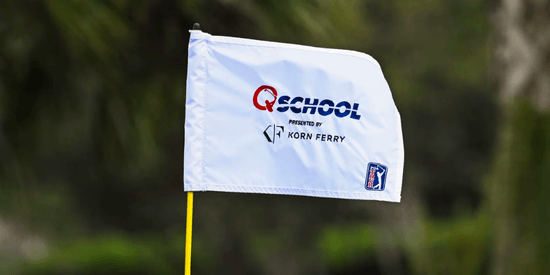
2025 PGA TOUR Q-School Guide: Sites, Scores, and Who Advanced
Dec 5, 2025Second Stage is complete and Final Stage awaits at Sawgrass — follow every Q-School leaderboard and the players still chasing
2025 LPGA TOUR Q-Series: Final Qualifying Stage FINAL SCORING
Dec 8, 2025Helen Briem earns medalist honors, 31 players headed to the LPGA next year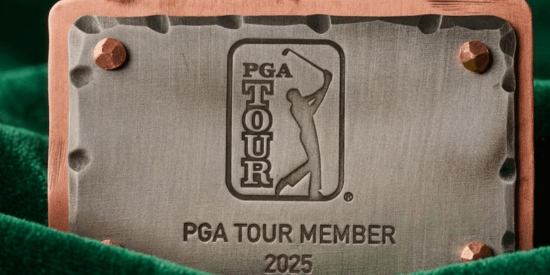
2025 PGA TOUR Q-School Final Stage: Ewart Leads Five New TOUR Card Winners
Dec 14, 2025A.J. Ewart topped Final Stage at TPC Sawgrass, leading five players who secured PGA TOUR membership for 2026.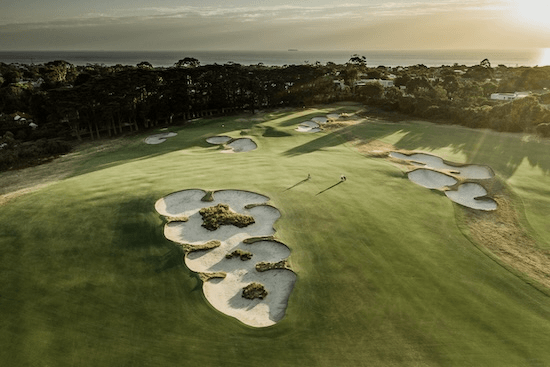
Australian Open at Royal Melbourne: Preview, amateur bios, and how to watch
Nov 30, 2025Rory McIlroy headlines one of the championship's top fields in years - at least four amateurs will have their chance at gloryInside Gil Hanse’s Restoration of Baltusrol’s Upper Course: A Return to Tillinghast’s
Dec 11, 2025Renowned architect Gil Hanse reveals how he brought Baltusrol’s Upper Course back to life by honoring A.W. Tillinghast’s originalLoading latest news...
